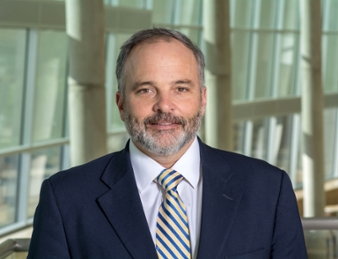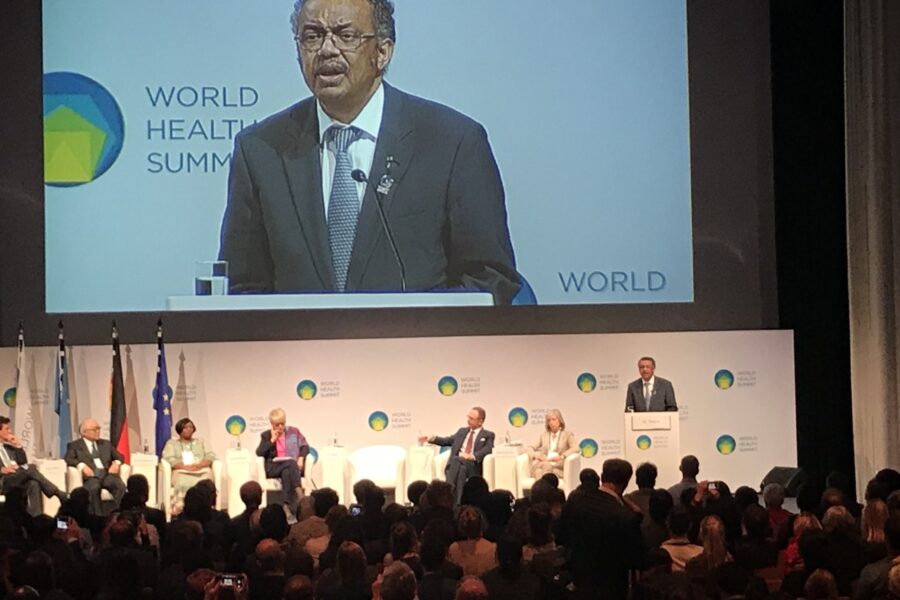From the World Health Summit, Berlin: Panel on Antimicrobial Resistance (AMR), October 27, 2019.
The 2019 World Health Summit (#WHS2019) opened with a panel discussion about the accelerating problem of global antimicrobial resistance (AMR). Dr. Peter Beyer, an intellectual property law expert working with the WHO on global health applications, led a panel of international experts to discuss current challenges of AMR – mostly focusing on what is widely recognized as a systemic market failure for R&D for new antimicrobials.
A number of international organizations, including the WHO and the UK Government, have issued reports citing the threat of AMR and issuing strong calls for action. (The CDC recently released their updated Antibiotic Resistant Threat Report earlier this November). The WHS panel began its conversation reviewing several recent reports of outbreaks of virtually untreatable bacterial infections. These reports highlight the current state of global emerging AMR. Many experts fear that we are approaching a tipping point in the 80-year “Antibiotic Era” in medicine and moving into a post-antibiotic era where definitive cures for bacterial (and other pathogen) infections are no longer a given.
A central theme of the WHS discussion was the alarmingly small pipeline of candidate antimicrobial therapeutics. Dr. Beyer relayed a current assessment by WHO that estimated in the range of 50 novel antimicrobials in the development pipeline across the entire pharmaceutical industry. This was contrasted with the thousands of candidate anti-cancer drugs currently in development. The lone industry representative on the panel, Julia Spencer from Merck, acknowledged the sentiments of the entire panel that the current economic market for antimicrobials coupled with the high development costs create an insurmountable disincentive for the capital and opportunity cost investments necessary to create new drugs under our present-day model of pharmaceutical R&D.
Panel members acknowledged the critical need for policy and regulation to reduce inappropriate antimicrobial use and advocated for more programs dedicated to improved infection prevention and control practices and antimicrobial stewardship. These interventions are particularly relevant for low and middle-income countries, and they represent a foundational element of actions to combat AMR.
Much of the discussion focused on the need for innovation, both in the technological space (where rapid, accessible, and affordable diagnostics could dramatically reduce inappropriate use of antimicrobials) and in the collaboration, finance, and market spaces. Dr. Elmar Nimmesgern, the head of the G20 initiative Global AMR R&D Hub, discussed opportunities to improve international collaboration and joint public-private efforts in antimicrobial development.
Some of the most interesting ideas came from the representative of the European Investment Bank, Felicitas Riedl. The Bank is exploring new financial instruments that could be used to incentivize investment in new antimicrobial candidates. The role of “impact investment” is acutely promising as a new trend where traditional venture capital mechanisms are used to achieve lower returns on investment in exchange for social impact that is important to investors. Variations on this theme, for example where impact investors may take “first loss” risk in investments, promise to expand dramatically the available capital for specific products or diseases.
The audience for the AMR panel was intently engaged, and the session ended with many hands still raised with questions and comments. The interest level from this international gathering of global health experts illustrates the importance of AMR in global health– what was termed “a silent pandemic” by one of the panelists. Dr. Lothar Wieler, President of Germany’s Robert Koch Institute ended the session on an optimistic note. He proposed that while similar to climate change in complexity and potential impact, AMR differs in that it is “100% anthropogenic” and therefore also resolvable by human action.
Although technically arguable – microorganisms have been producing and evolving to evade antimicrobial compounds for over a billion years – his point is relevant in directing immediate action that can counter this growing threat to global health security.
 This content was written by Dr. James Lawler, Director, International Programs and Innovation, Global Center for Health Security and Director, Clinical and Biodefense Research, National Strategic Research Institute
This content was written by Dr. James Lawler, Director, International Programs and Innovation, Global Center for Health Security and Director, Clinical and Biodefense Research, National Strategic Research Institute
